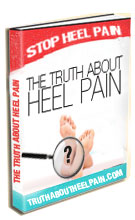Plantar Fasciitis Taping
You’ve tried it all. You tried over the counter pain medication, shoe orthotics, and exercises, but still your foot throbs in pain. You might think that there is nothing else to do but risky surgery, but you would be wrong. You could try taping your foot to help support your plantar fascia. It will take some time in the morning to properly tape your foot, but the support that it provides to your ligaments and the decrease in pain are worth it. By taping, you are essentially giving your foot a second plantar fascia to take the strain of your weight and bypassing your injured ligament. Learning how to properly tape your foot may be worth it if it helps you recover.
Plantar Fasciitis Explained
Plantar fasciitis is the inflammation of the thick, connective ligament that runs from the bottom of your heel bone to the base of your toes. It acts rather like a bowstring. When you put weight on your foot, your arch is compressed. The plantar fascia works to bring the foot back to its arched shape when you push off the ground. From too much weight or too much mechanical pounding, the plantar fascia can develop tears along its length. Your body recognizes these tears as injury and sends chemical mediators to heal the tear. It is the accumulation of this blood and fluid that causes your pain. By losing weight, resting the foot, icing the problem area, and taking anti-inflammatory medication, you can affect this process and relieve your pain. Sometimes, though, it takes other means to find relief.Why Tape?
Quite simply, taping your foot provides support and relief to your plantar fascia. It spans the length and width of the foot to take some of the pressure off this overused ligament. In addition, it severely restricts the movement of the plantar fascia and keeps it from tearing again and again. You will also allow for a phenomenon known as “rest in action.” The tape will allow you to rest your plantar fascia because it takes most of the punishment, but you don’t have to be off your feet. In fact, you can walk around pain free while getting the benefits of resting your feet. Although taping is a great way to help your plantar fasciitis pain, it does not often solve the problem entirely. It is better used in conjunction with other remedies, such as rest, ice, and pain medication, than it is used alone. However, it is a great weapon to have in your arsenal against plantar fasciitis pain.How to Tape Effectively
In general, your feet should be kept clean and dry when using a taping method. You should use athletic tape because it is strong, relatively impervious to sweat, and designed for the job. Duct tape and other methods are not recommended because they can adversely affect the skin and cause irritation.The first step is to place a strip of 1 and ½ inch tape around the metatarsal heads. This is roughly equivalent to just below the ball of the foot. Take another strip of tape and loop it from the anchor tape, around the back of the heel, and secure it to the opposite side of the anchor.
Use 1 inch tape, and start at the outside of the smallest toe. Tape down the side of the foot, around the heel, and then across the bottom of the foot to where the tape started at the smallest toe.
Repeat the process, starting at the outside of the big toe, taping down the inner arch of the foot, around the heel, and then across the sole to end at the base of the big toe.
Tape across the resulting cross with three layers of alternating tape.
Use 1 and ½ inch tape to tape across the layers of tape. Be sure to overlap the tape strips to provide the most support.
Cover the anchor strips below the ball of the foot with two more reinforcing strips, and then you are done with the taping procedure. Test it out to see if you are still having pain. If you do have pain, you may need to tape the foot again, focusing on making the tape smooth and taut.
Start your heel pain treatment immediately
There are many factors the cause heel pain and plantar fasciitis. It is important to identify what are the factors (like body weight, shoes, muscle tightness ect..) that can cause your heel pain. Unfortunately no 2 people are the same so what has worked for some will not work for others. Fortunately we have put together an ebook that can assess your risk factors and guide you through your plantar heel pain and plantar fasciitis treatment today.Start your heel pain treatment today.
